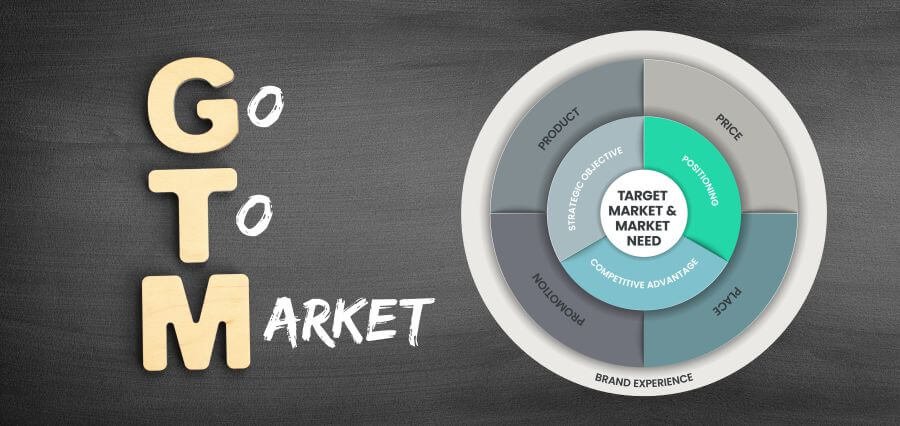By Nabeel A. Siddiqui, MSMS (MIT Sloan), MBA (HEC Paris), BEngg (Computer Science)
LinkedIn: https://www.linkedin.com/in/nabeelsiddiqui
Introduction: From Chaos to Repeatability
If you’ve ever built a Go-To-Market (GTM) model from scratch inside a large consulting firm, you know it’s not a linear journey. There’s no off-the-shelf playbook that works for every offering, sector, or client segment. What works in one region or industry might fall flat in another. And yet, some GTM engines scale predictably, profitably, and purposefully.
This article distills battle-tested lessons from the consulting trenches on how to build GTM engines that don’t just ignite once but generate repeatable traction, quarter after quarter. Whether you’re leading a new consulting offering, launching into a new sector, or trying to scale a mature capability, these insights are for you.
GTM Engine ≠ Sales Playbook
Let’s start with a foundational truth: GTM is not sales enablement. It’s not a collateral kit, a messaging guide, or a bunch of PowerPoint decks. A GTM engine is a system a living, integrated operating model that aligns strategy, demand, delivery, and talent.
Think of it like this:
Sales playbooks drive activity. GTM engines drive outcomes.
Lesson 1: Start with the Operating Model, Not the Offering
In consulting, the biggest mistake GTM leaders make is obsessing over what they’re selling (the solution) before defining how it will be sold and delivered at scale.
Winning Formula:
- Define your Target Operating Model (TOM)
- Ask: Who owns what? What is centralized vs. federated? How will demand flow through? What’s repeatable vs. bespoke?
Pro Tip: Create a TOM canvas with four quadrants: Strategy & Vision, Sales Motion, Delivery Capacity, and KPIs. Use it as a blueprint to align stakeholders.
Lesson 2: Codify Value in “Client Language”
Consultants love frameworks. Clients love outcomes. To scale, your GTM model must codify value in the language of the buyer not your solution architects.
Real-World Insight:
In one federal GTM initiative I led, the game-changer wasn’t the technical differentiation of the cloud solution, it was a one-pager that translated tech features into mission outcomes like “reduction in FOIA backlog by 40%” or “real-time fraud detection for disbursements.”
Framework: Use the Business Outcome Pyramid at the top: mission or business impact; in the middle: process transformation; at the bottom: technology enablers.
Lesson 3: Design for the “Last Mile” First
A scalable GTM engine works backwards from delivery confidence. If you can’t consistently stand-up teams, price accurately, and deliver the promised value you don’t have a GTM engine. You have a marketing idea.
What This Looks Like:
- A skills heatmap across geographies aligned to your solution stack.
- Pre-wired staffing models and delivery accelerators.
- Feedback loops from past deals to refine proposals.
Warning: Don’t skip this step. Many GTM engines break at scale because delivery lags behind the promise.
Lesson 4: Orchestrate a 3-Layer Demand Engine
The most successful GTM leaders build three synchronized demand levers:
- Top-Down Demand
- Executive relationships, strategic pursuits, big bets.
- Example: shaping a digital transformation agenda with an agency CIO.
- Middle-Out Activation
- Campaigns, use-case workshops, webinars, and roadshows.
- These generate mid-funnel velocity.
- Bottom-Up Referrals & Delivery-Led Growth
- Train delivery teams to spot new needs during execution.
- Leverage client success to open new doors.
Goal: Design motions for all three not just top-down executive sponsorship.
Lesson 5: Measure What Matters (and Automate the Rest)
Your GTM dashboard should not look like a CRM export. At scale, what matters most is leading indicators tied to conversion and capacity not just raw pipeline.
Key Metrics:
- Proposal velocity (RFP to submission time)
- Win rate by archetype
- Utilization of GTM play assets in live deals
- Number of delivery-identified leads
- Time-to-revenue from campaign to contract
Enablement Tip: Invest in automation and AI to tag, route, and personalize GTM assets based on opportunity metadata.
Lesson 6: Governance without Gridlock
Scaling GTM across multiple business units, geographies, and capabilities requires structure. But structure should never mean stifling innovation or adding bureaucracy.
Solution: The Federated GTM Council
- Create a cross-functional GTM leadership group with reps from sales, delivery, marketing, and product/solution teams.
- Set quarterly OKRs.
- Empower decentralized teams to execute but review, refine, and iterate centrally.
Analogy: Think of it like a franchise model. Central brand + playbook, local autonomy to execute.
GTM Scaling Maturity Curve
Here’s a simplified view of how GTM maturity looks in most consulting organizations:
| Maturity Level | Description | GTM Engine State |
| Ad-hoc | Founder-led, deal-by-deal | No engine; personal networks |
| Repeatable | Common value prop and plays | Early templates and delivery packages |
| Scalable | Demand gen + delivery aligned | GTM council, KPIs, play orchestration |
| Self-Optimizing | Feedback loops refine plays | AI/ML augments targeting and pricing |
| Embedded | GTM is part of org DNA | Market-driven solution lifecycle |
Bonus Insight: Culture Eats GTM Strategy for Breakfast
Even the best GTM model will fail if the culture doesn’t support collaboration, knowledge sharing, and customer-centricity. The most scalable GTM engines are built on trust, shared wins, and psychological safety.
Action: Celebrate when a delivery team generates a lead. Recognize enablement teams who evolve the playbook. Make GTM a team sport, not a sales function.
Final Thoughts
If there’s one lesson the consulting trenches have taught me, it’s this:
Scaling a GTM engine isn’t about controlling everything, it’s about aligning everything.
Strategy, assets, people, insights, and delivery capability must work as one connected system. When that happens, GTM stops being a friction-filled funnel and becomes a flywheel one that drives growth, client value, and differentiation at scale.
References
- Harvard Business Review, “How to Build a Go-to-Market Strategy That Scales”
- McKinsey & Co, “Growth Through Go-to-Market Reinvention”
- Gartner, “Designing GTM Operating Models for the Digital Era”
- IBM Institute for Business Value, “The Future of Consulting in a Platform Economy”




